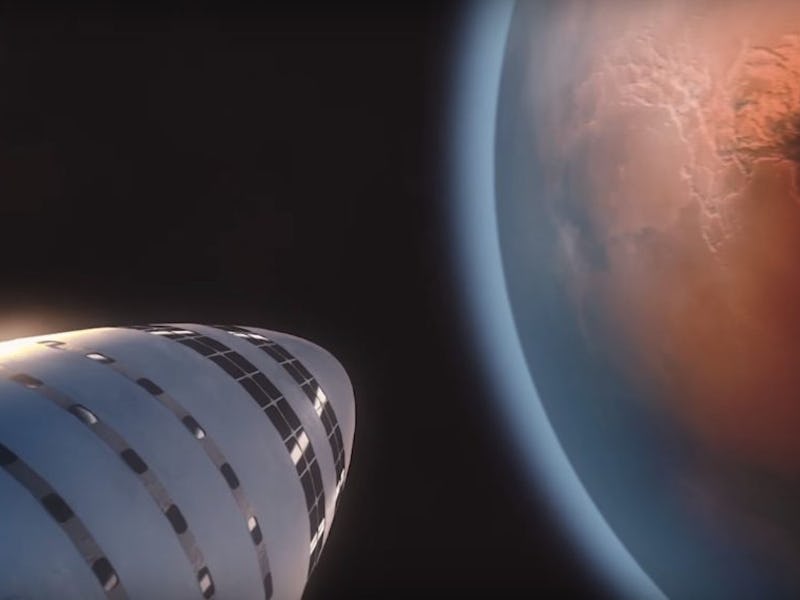SpaceX’s Mars-bound BFR ship is taking shape. New images published last week show a giant liquid oxygen tank arriving at the company’s Boca Chica facility in Texas, which hints at good progress for ship testing ahead of projected “hop” tests next year.
Local media outlet KVEO reported that the 95,000-gallon liquid oxygen tank can hold the same as around 20 tanker trucks. The tank’s full installation is set to occur later this year, following the successful installation of 600 kilowatts worth of solar arrays and two ground station antennas tracking International Space Station missions with the Dragon capsule. SpaceX said in a statement that the new tank “will be used to support propellant-loading operations during launch and vehicle tests,” and Teslarati notes that previous statements from CEO Elon Musk and president Gwynne Shotwell suggest Boca Chica will support initial BFR tests.
The tests will serve as a stepping stone to the ultimate goal of sending humans to Mars in 2024. Musk said in an October 2017 Reddit “ask me anything” session that tests will start “with a full-scale Ship doing short hops of a few hundred kilometers altitude and lateral distance,” stating because the tests are “fairly easy on the vehicle, as no heat shield is needed, we can have a large amount of reserve propellant and don’t need the high area ratio, deep space Raptor engines.”
The facility is a key part of SpaceX’s future plans. While the company currently leases three launch facilities from the United States government, the privately-owned Boca Chica spaceport would mean the company would have full control over its launch plans. At the South by Southwest conference in Austin, Texas, in March, Musk suggested that an orbital launch of the BFR could come as soon as 2020.
The company is expected to deliver more updates on the BFR soon. When asked by a Twitter user when to expect more details, Musk replied, “in a month or so.”
The ship to chart a course to the next stage of human spaceflight is about to take off — even if NASA thinks the company could miss its deadline for human spaceflights to the ISS.
